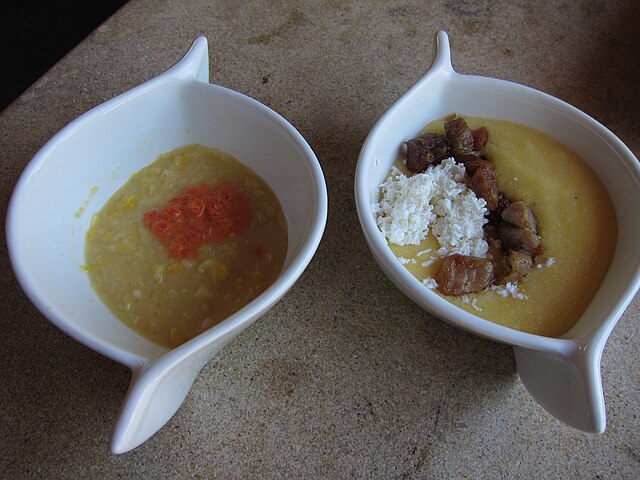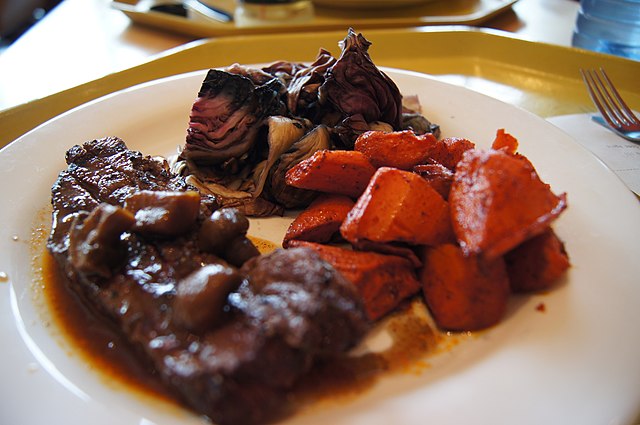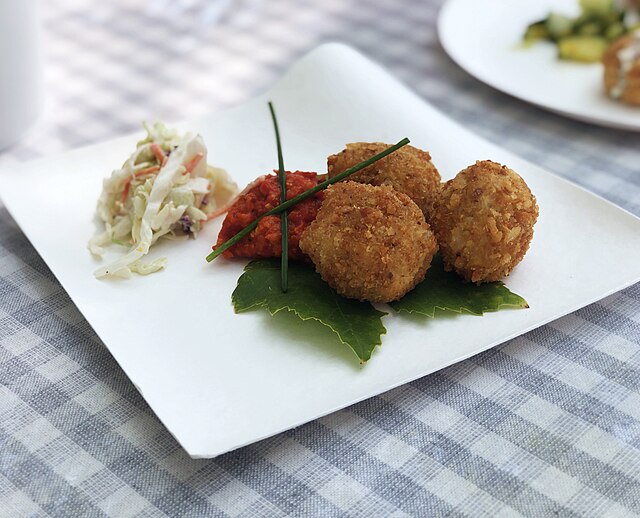When you bite into a piece of cornbread or savor succulent barbecued meat, you’re experiencing flavors that trace back thousands of years to Native American culinary traditions. The indigenous peoples of North America didn’t just survive off the land—they created sophisticated food systems that would eventually transform the entire world’s diet.
Have you ever wondered what American cuisine would look like without Native American contributions? The truth is, it wouldn’t exist as we know it today. From the Three Sisters agriculture to advanced preservation techniques, indigenous communities developed culinary innovations that continue to influence modern cooking.
The Foundation of Indigenous Food Systems
Native American cuisine represents far more than simple sustenance—it embodies a profound relationship between people, land, and spiritual beliefs. Indigenous communities across North America developed complex food systems that sustained populations for millennia while maintaining ecological balance.
The foundation of these food systems rested on deep environmental knowledge passed down through generations. Native peoples understood seasonal cycles, animal migration patterns, and plant growing seasons with scientific precision. They knew which plants provided medicine alongside nutrition, when to harvest for optimal flavor and nutritional content, and how to process foods for long-term storage.
This wasn’t just about survival—it was about thriving. Indigenous communities created diverse, nutrient-rich diets that supported healthy populations long before modern agriculture and food science existed. Their approach emphasized sustainability, ensuring food sources would remain available for future generations.
Three Sisters: Corn, Beans, and Squash
The most iconic element of Native American agriculture—the Three Sisters—represents both practical farming wisdom and spiritual symbolism. This companion planting system demonstrates the sophisticated agricultural knowledge indigenous peoples possessed thousands of years before European contact.
Corn provided a natural trellis for beans to climb, while beans fixed nitrogen in the soil to nourish all three crops. Squash leaves created living mulch, retaining soil moisture and preventing weeds. Together, these three crops provided complete nutrition—corn supplied carbohydrates, beans offered protein and essential amino acids, and squash contributed vitamins and healthy fats from its seeds.
But the Three Sisters meant more than efficient farming. Many tribes viewed these crops as sacred gifts, with creation stories explaining their origin and proper cultivation. Ceremonies surrounded planting, tending, and harvesting, reinforcing the spiritual connection between people and food sources.
Different tribes developed unique varieties suited to their specific climates and preferences. Hopi blue corn, Seminole pumpkins, and Cherokee purple beans represent just a few examples of the incredible genetic diversity indigenous peoples cultivated over centuries.
Wild Game and Protein Sources

While agriculture provided dietary staples, hunting supplied essential proteins and fats that sustained Native American communities through harsh winters and lean times. Indigenous hunters developed profound respect for animal life, viewing hunting as a sacred act requiring proper ceremony and gratitude.
Buffalo dominated the Great Plains, providing not just meat but materials for shelter, clothing, and tools. Plains tribes utilized every part of the buffalo, demonstrating remarkable resourcefulness and respect for the animal’s sacrifice. They developed specialized hunting techniques, including coordinated drives that could harvest enough meat to feed entire communities for months.
In forested regions, deer, elk, and smaller game provided protein sources. Coastal tribes harvested salmon, shellfish, and marine mammals. Desert communities hunted rabbits, harvested insects, and found protein in desert plants. Each environment offered different protein sources, and indigenous peoples became expert at maximizing these resources.
Hunting wasn’t just about individual skill—it required community cooperation, seasonal knowledge, and sophisticated preservation techniques to transform fresh meat into long-lasting food supplies.
Regional Variations Across Native American Tribes
Native American cuisine varied dramatically across the continent, shaped by local climates, available resources, and cultural practices. Understanding these regional differences helps us appreciate the incredible diversity within indigenous food traditions.
Northeastern Woodland Tribes
The dense forests of the Northeast provided abundant wild game, nuts, berries, and maple syrup. Tribes like the Iroquois, Algonquin, and Ojibwe developed food systems that maximized forest resources while practicing sustainable agriculture in cleared areas.
Wild rice became a staple for Great Lakes tribes, harvested from natural stands in shallow lakes and wetlands. This nutritious grain required specialized harvesting techniques and processing methods that tribes perfected over generations. Women would paddle canoes through rice beds, bending stalks over the canoe and beating them with special sticks to release the grain.
Acorns provided another crucial food source, though they required extensive processing to remove bitter tannins. Native peoples developed techniques for leaching acorns, then grinding them into flour for bread and porridge.
Maple Syrup and Forest Resources
The indigenous peoples of the Northeast invented maple syrup production, developing techniques that remain essentially unchanged today. They discovered that certain maple species produced sweet sap during late winter temperature fluctuations, and they created systems for collecting and concentrating this sap into syrup and sugar.
Maple sugar became so important that many tribes called the late winter “sugar moon” and organized their seasonal rounds to be near maple groves during sap runs. They stored maple sugar in birchbark containers, using it to sweeten other foods and as a portable energy source during travel.
Forest resources extended far beyond maple syrup. Native peoples harvested wild berries, nuts, mushrooms, and medicinal plants. They understood which plants were edible, when to harvest for best flavor and nutrition, and how to process and preserve forest foods for year-round use.
Plains Tribes and Buffalo Culture
The Great Plains supported enormous herds of American bison, and Plains tribes like the Lakota, Cheyenne, and Crow built their entire food systems around these magnificent animals. Buffalo hunting required incredible skill, courage, and community coordination.
Before horses arrived from Europe, Plains tribes hunted buffalo on foot using sophisticated techniques. They constructed buffalo jumps—cliff sites where herds could be stampeded over edges—and organized communal hunts that could harvest hundreds of animals at once.
Buffalo provided not just fresh meat but pemmican—a concentrated, portable food made from dried buffalo meat, fat, and berries. Pemmican could last for years without spoiling, making it perfect for nomadic lifestyles and long journeys. This indigenous energy bar was so effective that European fur traders and explorers relied on it for survival.
Plains tribes also gathered prairie turnips, wild onions, and other prairie plants to supplement their meat-heavy diets. Women knew locations of productive plant communities and returned to them year after year, managing these wild resources through careful harvesting practices.
Southwestern Pueblo Cuisine
The arid Southwest challenged indigenous peoples to develop agriculture in harsh desert conditions. Pueblo peoples like the Hopi, Zuni, and various Rio Grande tribes created sophisticated irrigation systems and drought-resistant crop varieties.
Southwestern cuisine emphasized corn preparations, with dozens of different ways to process and cook this essential grain. Blue corn held special significance, used for ceremonial dishes and prized for its distinctive color and nutty flavor. Tribes developed specialized grinding techniques using metates—stone grinding platforms that could reduce corn to fine flour.
Chile peppers became central to Southwestern indigenous cuisine, adding flavor, nutrition, and natural preservation properties to foods. Different varieties ranged from mild to intensely hot, and tribes developed techniques for drying and storing chiles to use year-round.
Desert Adaptations and Agriculture
Desert farming required intimate knowledge of water sources, soil conditions, and drought-resistant techniques. Pueblo peoples developed terraced gardens, check dams, and sophisticated irrigation systems that maximized limited water resources.
They also harvested desert plants like prickly pear cactus, piñon nuts, and agave. These plants provided essential nutrients and calories during times when agricultural crops failed due to drought. Indigenous peoples knew how to process cactus pads to remove spines and bitter compounds, how to harvest and roast agave hearts, and when piñon trees would produce abundant nut crops.
Desert survival required understanding seasonal patterns, plant lifecycles, and processing techniques that could transform seemingly inedible plants into nutritious foods. This knowledge allowed Southwestern tribes to thrive in environments that seemed hostile to agriculture.
Pacific Northwest Coastal Foods

The Pacific Coast offered incredible marine resources that supported some of North America’s most sophisticated non-agricultural societies. Tribes like the Tlingit, Haida, and Chinook built complex food systems around salmon runs, marine mammals, and coastal resources.
Salmon represented the cornerstone of Pacific Northwest indigenous cuisine. Tribes developed elaborate ceremonies surrounding salmon runs, viewing these fish as sacred beings who gave their lives to sustain human communities. They created specialized tools for catching salmon, including fish wheels, weirs, and dip nets.
Smoking and drying techniques allowed coastal tribes to preserve enormous quantities of salmon for year-round consumption and trade with inland tribes. Cedar plankhouse cultures developed sophisticated wood-fired smoking methods that could process hundreds of salmon at once.
Marine resources extended beyond salmon to include halibut, shellfish, sea mammals, and seaweed. Each resource required specific knowledge and techniques for harvesting, processing, and preservation.
Traditional Cooking Methods and Techniques
Native American cooking methods represent thousands of years of culinary innovation, developed without metal cookware or modern fuel sources. Indigenous peoples created ingenious techniques for transforming raw ingredients into delicious, nutritious meals using only natural materials and fire.
These traditional methods weren’t primitive—they were sophisticated technologies perfectly adapted to available resources and lifestyle needs. Many techniques produced superior flavors and retained more nutrients than modern cooking methods.
Earth Ovens and Pit Cooking
Earth ovens—underground cooking chambers lined with stones and heated with fire—represent one of humanity’s oldest cooking technologies. Native American tribes across the continent perfected earth oven techniques for slow-cooking large quantities of food.
The process began by digging a pit and lining it with stones. A fire burned in the pit for hours, heating the stones to extreme temperatures. Once the fire burned down, cooks removed coals and ash, lined the hot stones with green vegetation to create steam, added food wrapped in leaves or hide, covered everything with more vegetation and earth, then left the food to cook slowly for hours or even days.
Earth ovens could cook massive quantities of food for community feasts, efficiently transforming tough roots, large game, and other ingredients into tender, flavorful meals. The slow, moist heat broke down tough fibers, concentrated flavors, and retained maximum nutrition.
Different regions developed specialized earth oven techniques. Pacific Northwest tribes roasted camas roots in elaborate earth ovens, while Southwestern peoples used pit roasting for agave hearts. The technique was so effective that many indigenous communities still use earth ovens for special occasions and ceremonies.
Smoking and Preservation Methods
Long before refrigeration, Native American peoples developed sophisticated preservation techniques that could keep foods safe and nutritious for months or years. Smoking represented one of the most important preservation methods, adding flavor while preventing spoilage.
Indigenous smoking techniques varied by region and available wood types. Pacific Northwest tribes used cedar and alder woods to smoke salmon, creating distinctive flavors that enhanced rather than masked the fish’s natural taste. Plains tribes constructed specialized smoking racks for preserving buffalo meat, using specific wood combinations that provided optimal preservation and flavor.
The smoking process required careful attention to temperature, humidity, and airflow. Too much heat would cook rather than preserve meat, while insufficient heat wouldn’t prevent spoilage. Native peoples understood these principles intuitively, passing detailed knowledge through generations of practice.
Beyond smoking, indigenous peoples developed other preservation methods including air-drying, salt preservation (where salt was available), and fermentation. Each method required specific techniques and conditions, representing sophisticated food science developed without modern understanding of bacteria and chemistry.
Sacred Foods and Ceremonial Dishes
Food held deep spiritual significance for Native American peoples, connecting communities to ancestors, land, and spiritual beliefs. Certain foods were considered sacred gifts requiring proper ceremonies and respectful treatment.
Corn held particular sacred status for many tribes, viewed as a gift from Creator that required gratitude ceremonies at planting, growing, and harvest times. First corn ceremonies celebrated new harvests and ensured continued abundance. Many creation stories explained corn’s origin and its central role in human life.
Buffalo was sacred to Plains tribes, honored through elaborate hunting ceremonies and rituals that acknowledged the animal’s sacrifice. Every part of the buffalo was used reverently, with specific ceremonies for different organs and body parts. Wasting buffalo meat was considered deeply disrespectful to the animal’s spirit.
Salmon held sacred status for Pacific Northwest tribes, welcomed back each year with First Salmon ceremonies that honored returning fish and ensured their continued return. These ceremonies reinforced the reciprocal relationship between humans and salmon, emphasizing gratitude and proper behavior toward this essential food source.
Ceremonial dishes often featured sacred ingredients prepared according to ancient protocols. These foods weren’t just meals—they were spiritual communion that connected people to their heritage, land, and beliefs.
Native American Influence on Modern American Cuisine
The impact of Native American cuisine on modern American food culture extends far beyond what most people realize. Indigenous peoples introduced Europeans to foods that would transform global cuisine, creating the foundation for what we now consider “American” food.
Consider this: without Native American contributions, there would be no tomatoes in Italian cuisine, no potatoes in Irish cooking, no chocolate anywhere in the world, and no corn-based dishes from Mexico to Romania. Indigenous peoples of the Americas gave the world more than half of all crops currently grown globally.
Foods We Take for Granted
Walk through any American supermarket and you’ll find Native American contributions everywhere. Corn appears in countless forms—fresh sweet corn, cornmeal, corn syrup, tortillas, and popcorn. Beans range from navy beans to kidney beans to lima beans, all originally cultivated by indigenous peoples.
Potatoes, tomatoes, peppers, squash, pumpkins, sunflowers, pecans, cranberries, blueberries, chocolate, vanilla, and turkey—all gifts from Native American agricultural innovation. These foods were unknown to Europeans before contact with indigenous peoples.
Many cooking techniques also derive from Native American traditions. Barbecuing originated with indigenous smoking methods. Succotash combines the Three Sisters in a dish that remains popular today. Maple syrup production follows techniques invented by Northeastern tribes.
Even regional American cuisines show strong Native American influence. Southern cuisine incorporates indigenous corn preparations, bean dishes, and cooking methods. Southwestern American food is largely indigenous, with additions from Spanish colonizers. Pacific Northwest cuisine still emphasizes salmon and other indigenous foods.
Contemporary Native American Chefs and Restaurants

Today’s Native American chefs are reclaiming and revitalizing indigenous food traditions while creating innovative contemporary cuisine. Restaurants across the country now feature indigenous ingredients and traditional cooking methods, introducing mainstream diners to authentic Native American flavors.
Chefs like Sean Sherman (the Sioux Chef) have gained national recognition for restaurants that serve pre-contact indigenous foods—no wheat flour, dairy, refined sugar, or Old World ingredients. These restaurants demonstrate the incredible diversity and sophistication of traditional Native American cuisine.
Indigenous restaurants aren’t just serving food—they’re educating diners about Native American culture, history, and ongoing contributions to American cuisine. They challenge stereotypes and misconceptions while celebrating the rich culinary heritage that shaped American food culture.
Many contemporary Native American chefs emphasize locally sourced, sustainable ingredients that connect to traditional foodways while appealing to modern environmental consciousness. They’re proving that indigenous food systems offer solutions to current agricultural and environmental challenges.
Preserving Culinary Traditions in Modern Times
Preserving Native American culinary traditions faces significant challenges in the modern world. Historical suppression of indigenous cultures, loss of traditional lands, and disruption of seasonal food systems have threatened many traditional foodways.
However, tribal communities, cultural organizations, and educational institutions are working to document, preserve, and revitalize indigenous food knowledge. Seed preservation projects maintain heirloom varieties of traditional crops. Elders share knowledge with younger generations through formal and informal teaching.
Some tribes are reclaiming traditional food systems as part of broader cultural revitalization efforts. They’re establishing traditional gardens, restoring native plant communities, and teaching traditional food preparation methods. These efforts connect people to their heritage while addressing modern health challenges.
Educational programs in schools and communities introduce both Native and non-Native people to indigenous food traditions. These programs build understanding and respect for Native American contributions to American cuisine while preserving invaluable cultural knowledge for future generations.
Conclusion
Native American cuisine represents far more than historical curiosity—it’s the foundation of modern American food culture and a sophisticated system of knowledge that offered sustainable solutions to feeding communities in harmony with natural environments. From the Three Sisters agriculture that fed millions of people to preservation techniques that lasted centuries, indigenous peoples created culinary innovations that continue to influence how we eat today.
The legacy of Native American cuisine surrounds us daily, from the corn in our breakfast cereal to the potatoes on our dinner plates. Understanding and honoring these contributions helps us appreciate the depth of indigenous knowledge and the ongoing relevance of traditional food systems. As we face modern challenges related to sustainable agriculture, environmental conservation, and healthy eating, Native American food traditions offer time-tested wisdom that remains remarkably relevant.
The story of Native American cuisine is ultimately about resilience, innovation, and the profound connection between people, food, and land. By learning about and supporting indigenous food traditions, we honor the original inhabitants of North America while enriching our own understanding of truly sustainable, culturally meaningful food systems.
Frequently Asked Questions
1. What are the Three Sisters in Native American agriculture?
The Three Sisters refer to corn, beans, and squash—three crops traditionally planted together by many Native American tribes. This companion planting system provided complete nutrition while improving soil health, with corn providing support for beans, beans fixing nitrogen for all three crops, and squash leaves acting as living mulch.
2. How did Native Americans preserve food without refrigeration?
Native Americans developed sophisticated preservation techniques including smoking, air-drying, earth oven roasting, and creating pemmican (dried meat mixed with fat and berries). These methods could preserve foods for months or years while maintaining nutritional value and preventing spoilage.
3. What modern American foods originated with Native Americans?
Native Americans gave the world corn, potatoes, tomatoes, beans, squash, peppers, chocolate, vanilla, turkey, sunflowers, pecans, cranberries, blueberries, and many others. More than half of all crops currently grown worldwide originated with indigenous peoples of the Americas.
4. Are there restaurants today that serve authentic Native American cuisine?
Yes, contemporary Native American chefs operate restaurants across the country that feature traditional indigenous ingredients and cooking methods. Many focus on pre-contact foods, using no European ingredients, while others create modern interpretations of traditional dishes.
5. How can people learn more about Native American food traditions?
You can learn about Native American cuisine through tribal cultural centers, museums, educational programs, cookbooks by indigenous authors, and restaurants owned by Native American chefs. Many tribes also offer cultural events and demonstrations that showcase traditional food preparation methods.

